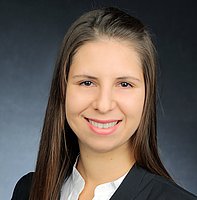On the 20th of April 2016 RESOLV organized a captivating excursion to Bayer HealthCare in Wuppertal. It was a great opportunity for us PhD students to get insider information about the many career possibilities and research areas in Bayer.
The trip began from Bochum with a bus transfer to the Bayer HealthCare (BHC) research center in Wuppertal, where Mr. Larsen Schnadhorst from the Communication department and Ms. Angelika Behling from the Human Resources welcomed us. Ms. Behling introduced Bayer to us: About 2,600 employees work in the Wuppertal site and half of them are employed in research; the site covers an area of 18 hectars and its focus revolves around the topics cardiology and oncology.
Behling also told us about the philosophy of Bayer and briefed us about how to apply for and what to expect from Bayer. Here came some interesting information for a PhD student! For example she told us about PhD-workshops organized in cooperation with Germany and USA: To take part in these workshops you have to fill an application on their web-page – If you get accepted, Bayer will cover the costs. There are also special graduate programs including international trainee Programs for chemists, engineers or computational scientists. Getting a Post-Doc position is almost a bet, but in case of acceptance you would get a three-year contract with a follow-up contract being likely. Concerning direct job applications, two routes can be taken: 1) It is possible to start as a head of laboratory in R&D with one or two technicians. 2) You can start a career in a manager-position, rotating between different places every few years. Jobs like patent attorney or business consultor are also possible alternatives.
After this presentation the lab-station visits began. At the ophthalmology laboratory we were shown the structure of a human eye and what kind of things could happen with your eyes – e.g. the retina – when getting older. We could see damaged eye cells of rats under a microscope and how rats with induced eye diseases are examined in order to develop drugs that could possibly help humans in a later stage.
At the medicinal chemistry department we saw how drugs are synthesized and investigated. It was at the newly found catalysis department that we discover how professionals can also come across with some technical problems sometimes leading to high amounts of expenses or even the abortion of the project. However, given a second chance in many cases the problem is solved.
At the cardiology department we got to know about the manufacturing of drugs against thrombosis or hypertension. Researchers use mice or rats to test the effects of the drugs and we were shown how they conduct animal experiments and what equipment they use. From explanatory videos we could see how thrombosis can be induced mechanically in living but anesthetized mice and how special drugs can prevent it.
After our six hour excursion we were tired but happy that we got so much first-hand information about a pharmaceutical company. Now it was time to get back to the Ruhr-University Bochum.
————————————————————————————————————————————
About the author


